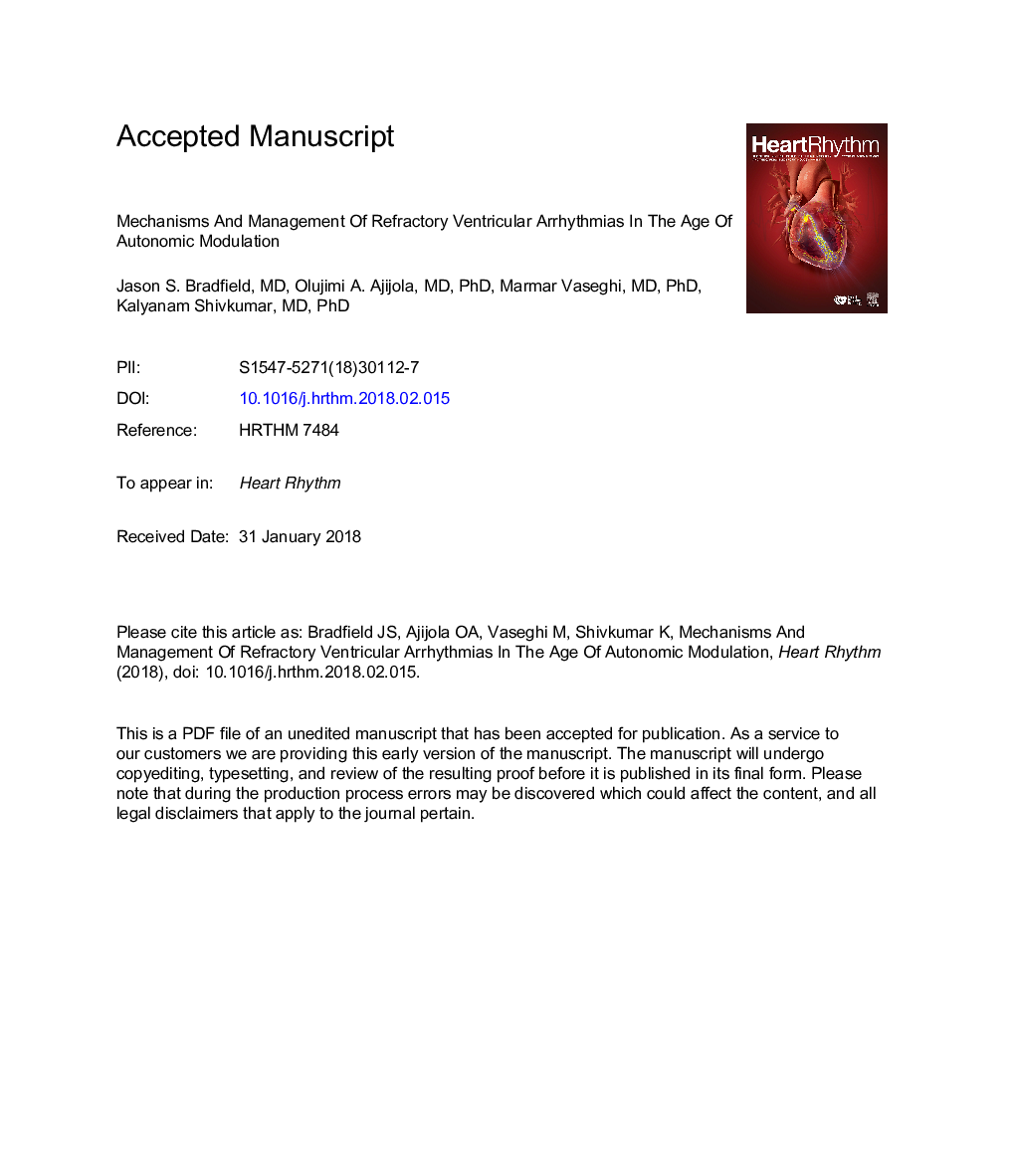| Article ID | Journal | Published Year | Pages | File Type |
|---|---|---|---|---|
| 8660115 | Heart Rhythm | 2018 | 33 Pages |
Abstract
Ventricular arrhythmias are responsible for hundreds of thousands of deaths every year. Catheter ablation of ventricular tachycardia (VT) is an essential component of the management of these life-threatening arrhythmias. However, in many patients, despite medical and interventional therapy, VT recurs. Furthermore, some VT substrates (mid-myocardial, left ventricular summit, and intraseptal) are not easily targeted because of limitations of currently available technology. In certain clinical settings, ventricular fibrillation (VF) episodes that have premature ventricular contraction triggers can also be targeted with catheter ablation. However, in most patients there is no clear VF trigger to target, and therefore polymorphic VT or VF cannot be adequately treated with catheter ablation. The autonomic nervous system plays a crucial role in all aspects of ventricular arrhythmias, yet interventions specific to the cardiac neuronal axis have been largely underutilized. This underutilization has been most pronounced in patients with structural heart disease. However, there is a growing body of literature on the physiology and pathophysiology of cardiac neural control and the benefits of neuromodulation to treat refractory ventricular arrhythmias in these patients. We present case-based examples of neuromodulatory interventions currently available and a review of the literature supporting their use.
Keywords
Related Topics
Health Sciences
Medicine and Dentistry
Cardiology and Cardiovascular Medicine
Authors
Jason S. MD, FHRS, Olujimi A. MD, PhD, FHRS, Marmar MD, PhD, FHRS, Kalyanam MD, PhD, FHRS,
